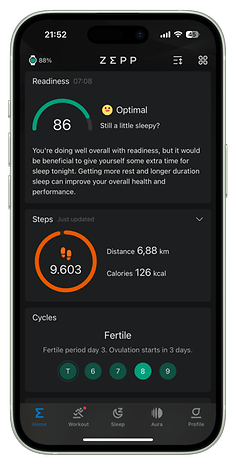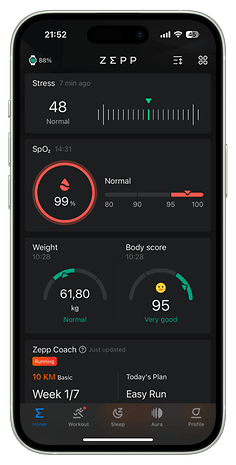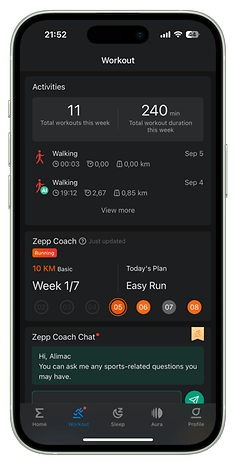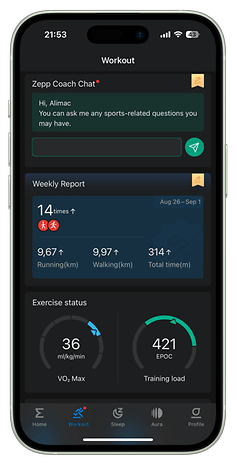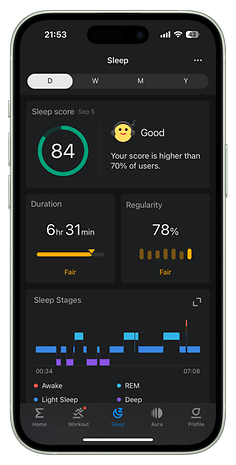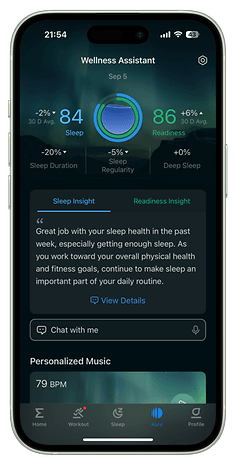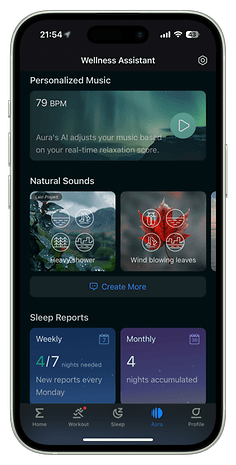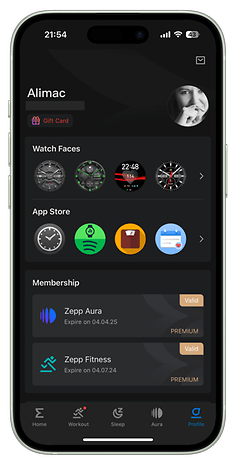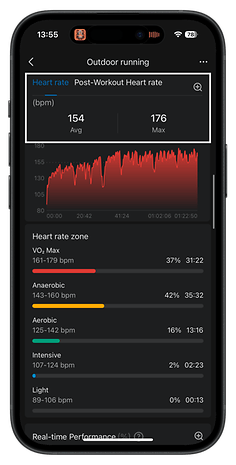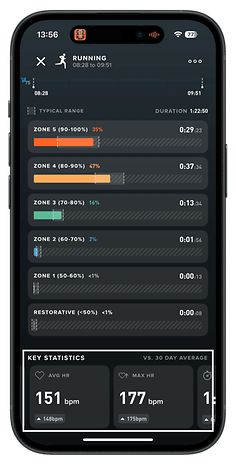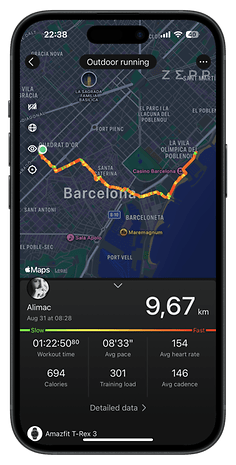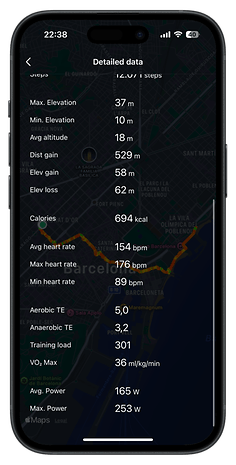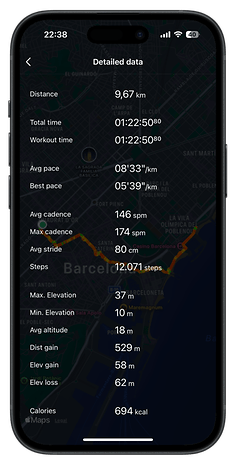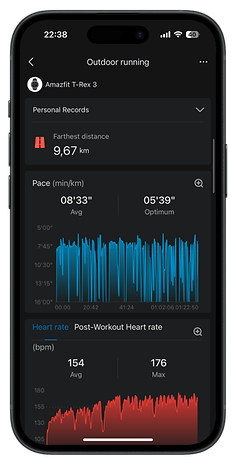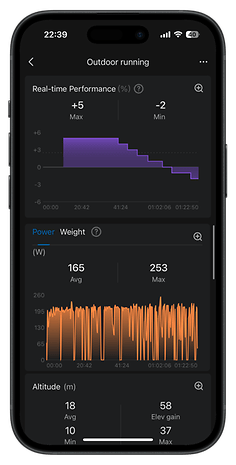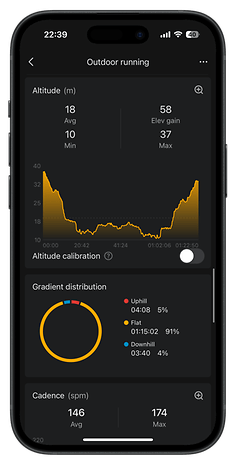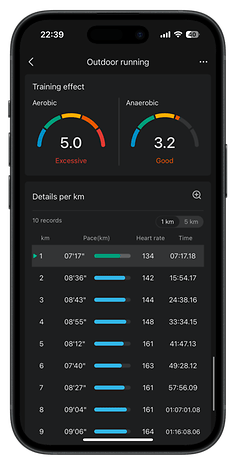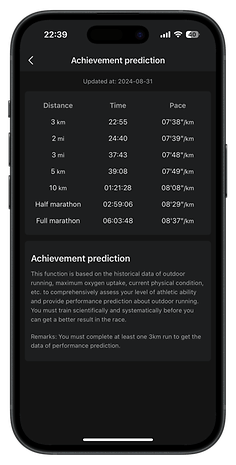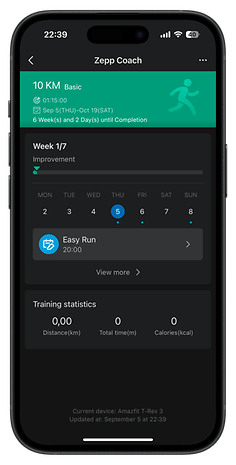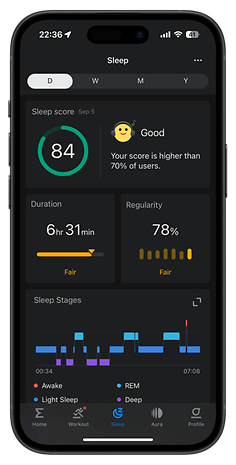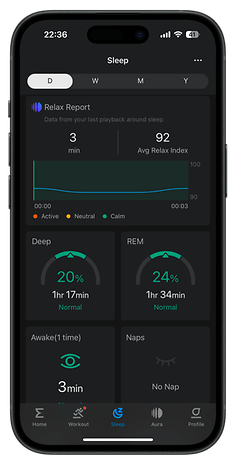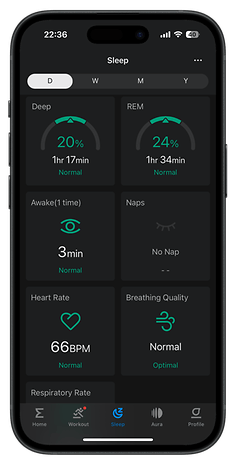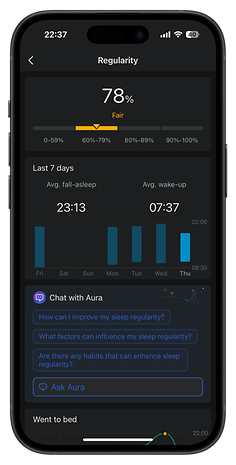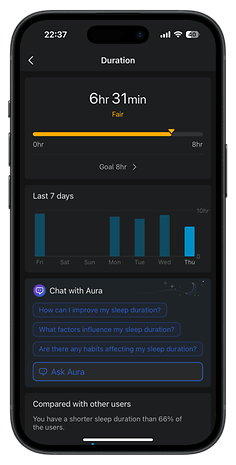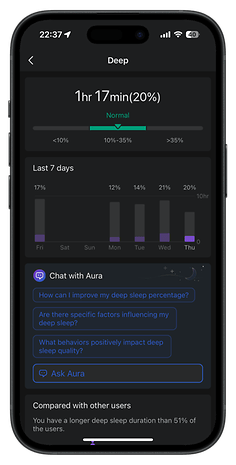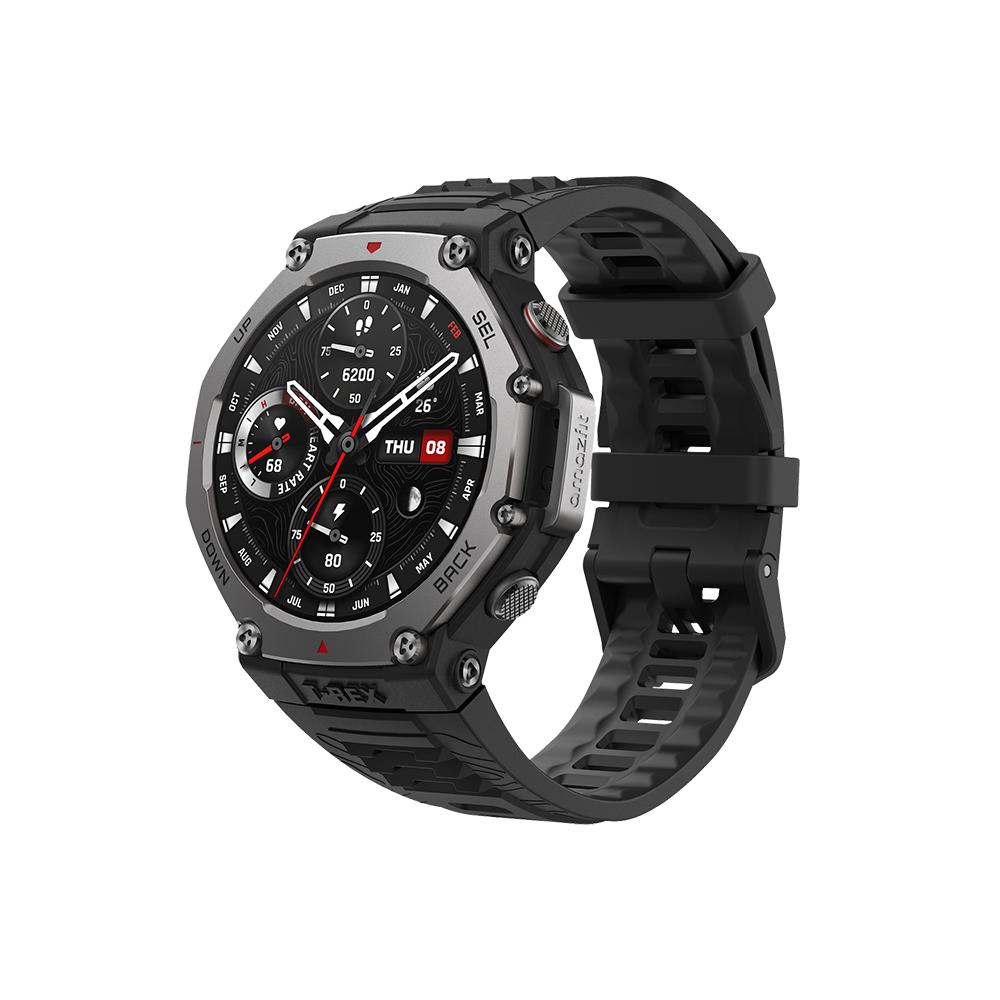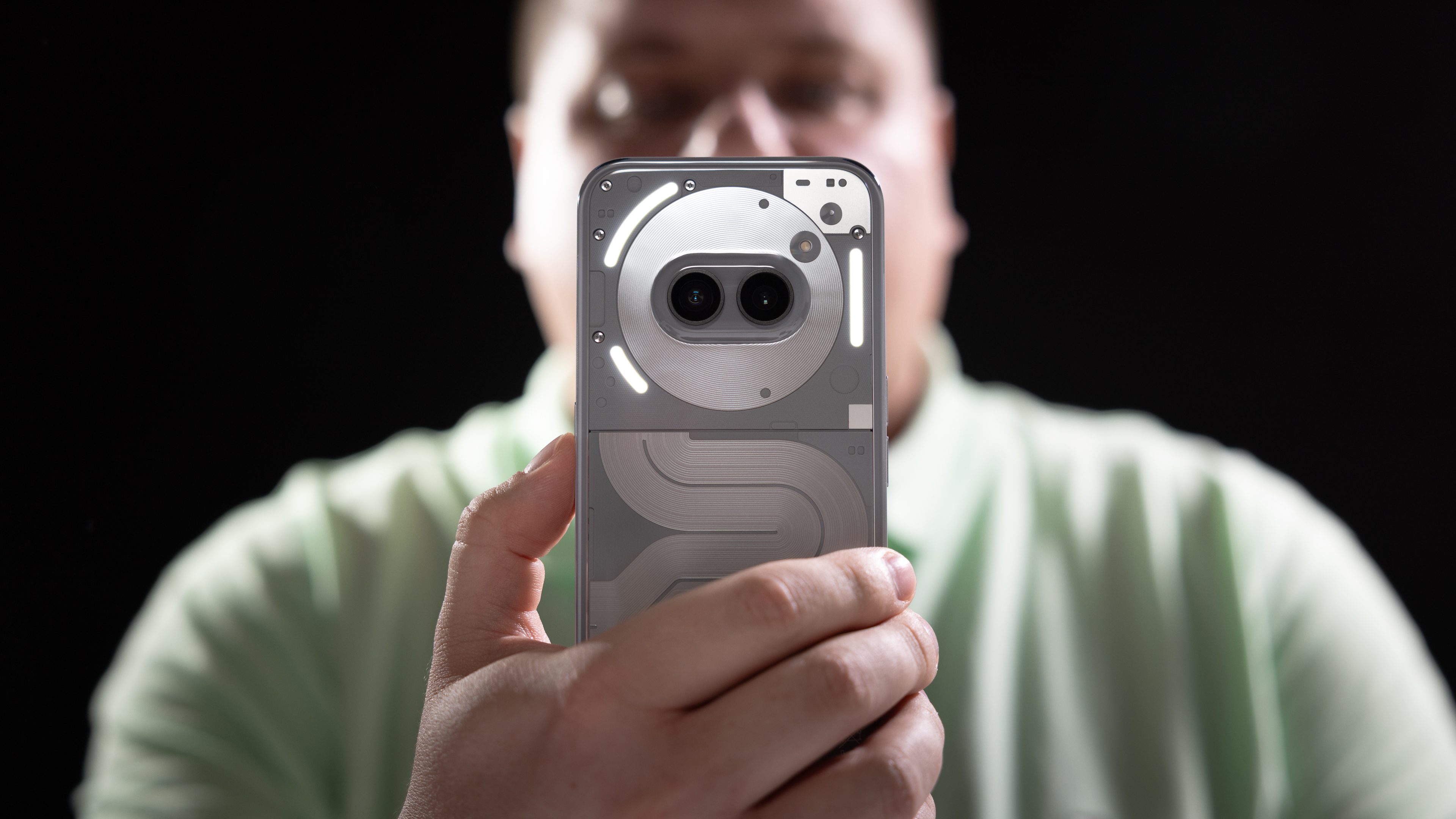
The Amazfit T-Rex 3 builds upon its predecessors with a more refined design, delivering a rugged yet energy-efficient smartwatch tailored for adventurers. While it offers an impressive value for its price, its proprietary software—though highly functional—may present a learning curve for some users. After testing the device extensively, here are my thoughts on how the T-Rex 3 fares in real-world use.
Good
- Functional physical buttons
- Bright, colorful AMOLED display
- Dual-band GPS
- Compatible with Android and iOS
- Effective automatic activity detection
- Offline maps and routes
- Week-long battery life
Bad
- Predominantly plastic build
- Only available in one size
- Too many subscriptions
- No music streaming service available
- No IP rating—but water-resistance up to 10ATM
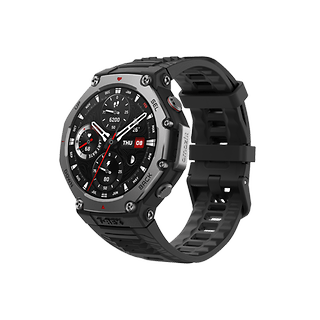

Amazfit T-Rex 3: All deals
Price & Availability
The Amazfit T-Rex 3 is now available for purchase on the official store and through various retail partners, starting at $299. In Europe, it is priced at €299, positioning itself as a competitive choice for those in the market for a heavy-duty, outdoor-focused sports smartwatch.
Design, Display & Durability
The name T-Rex signals strength, toughness, and resilience—qualities that match the rugged, durable design of the T-Rex smartwatch series. Amazfit uses this imagery to position the T-Rex as a functional tool designed to withstand harsh conditions, targeting adventure seekers who need reliability for outdoor activities. But does it actually deliver on that promise
?
Pros:
- Stainless-steel frame (upgrade).
- Functional physical buttons.
- Bright, colorful AMOLED display.
Cons:
- Predominantly plastic build.
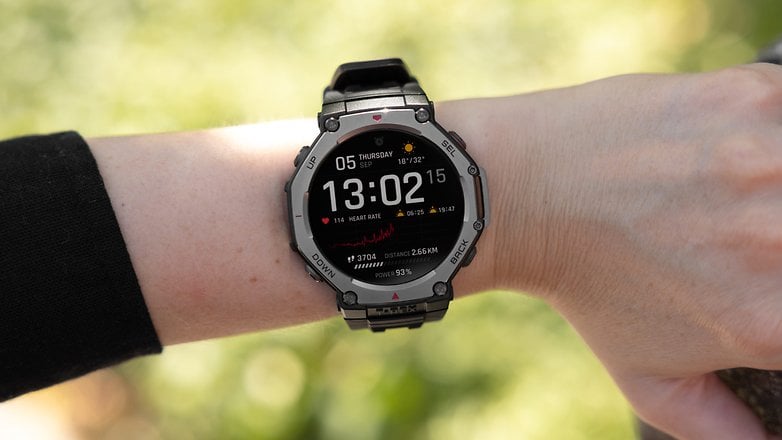
My testing confirms that the T-Rex 3 delivers. Despite lacking an official IP rating, it meets nine military-grade standards—six fewer than the previous model. It offers 10 ATM water resistance and supports free diving up to 45 meters. Additionally, it is certified by EN13319 and ISO6425, ensuring reliable performance and durability in challenging underwater conditions, including professional diving.
In addition to withstanding extreme temperatures as low as -30 °C, the T-Rex 3 is a sizable smartwatch with a 48.5 mm case. Its updated octagonal design now features a stainless-steel bezel, adding a more premium touch, though the overall build remains predominantly plastic. The AMOLED display is 16% larger and twice as bright as the previous generation, improving visibility in virtually all the conditions I tested it in.
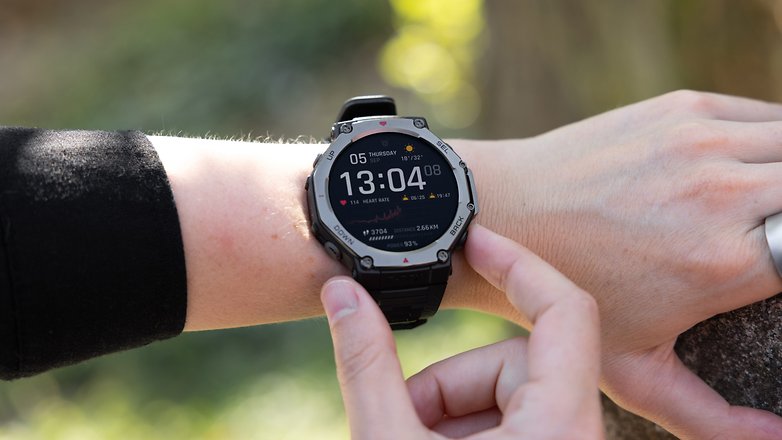
Let’s not forget, this smartwatch is still packing a massive 700 mAh battery—by today’s standards, it’s a total beast.
Finally, compared to all the devices I’ve tested so far, the T-Rex 3 stands out with more physical buttons than any other smartwatch. It’s got four around the octagonal case: Up, Down, Select, and Back. These come in clutch when you’re dealing with cold weather, swimming, or just have wet hands. I’ve got to say, I really liked that—though I admit, this is not my kind of smartwatch design.
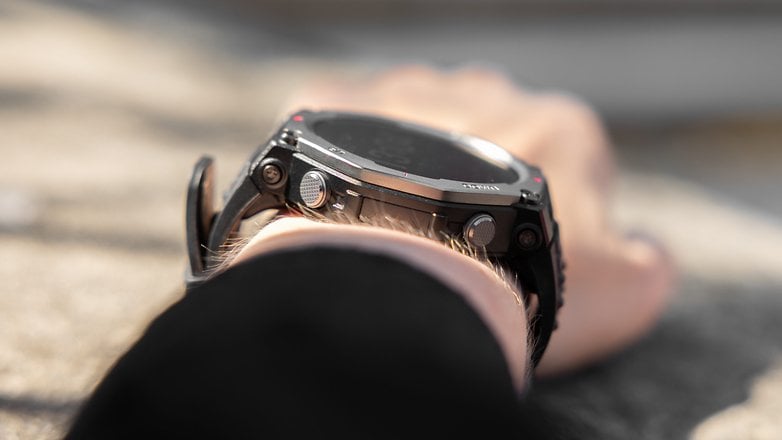
Software & Compatibility
The software on the T-Rex 3 is where things get really intriguing. First off, this isn’t a Wear OS device—it’s running on ZeppOS 4, a proprietary operating system. But don’t let that fool you, as it still provides access to a surprisingly robust app ecosystem. Notably, it also features an AI assistant powered by OpenAI’s GPT-4, and some fresh innovations in the realm of privacy, including a standout feature like GPS discretion
.
Pros:
- Compatible with Android and iOS.
- Provides a wide array of services.
- Regular software updates.
Cons:
- Too many subscriptions.
- AI features have improved, but remain somewhat predictable.
- No music streaming service available.
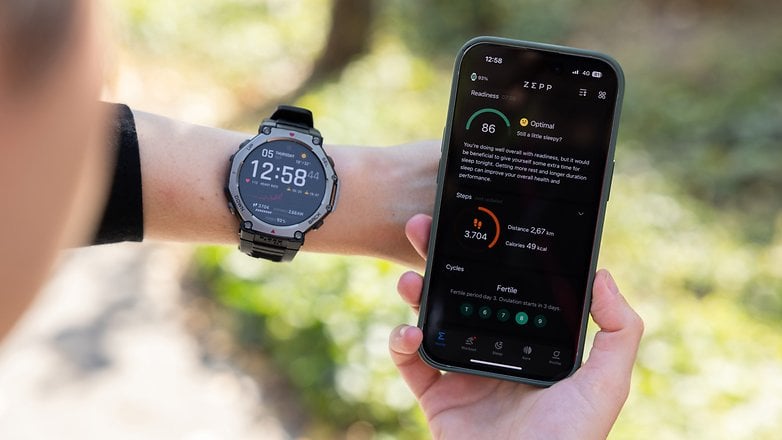
The first major advantage of the Zepp OS is its compatibility with both Android and iOS devices—a solid win in my book. However, it does come with some redundancy, requiring multiple apps like Zepp Pay to cover all its features.
I should mention that I received the T-Rex 3 for testing before its official release, so I’m using the software in a closed beta test. As a result, some features, like the menstrual cycle tracking, aren’t working properly for me. I bring this up because it could affect my overall experience with the software.
Overall, Zepp OS is straightforward and offers an intuitive user experience, although the interface can occasionally behave in unexpected ways. For example, the Battery Saver mode is found under Preferences rather than Battery Manager, unlike most other systems. However, you can also quickly activate it by clicking the Battery icon in the shortcut menu.
Both the companion app and the standalone smartwatch are simple to navigate and easy to understand. While Amazfit does monetize certain software services like Aura and Fitness, most of the device’s features are available without a subscription. However, you won’t receive weekly reports without a Fitness subscription. In my review of the Amazfit Balance, I dive deeper into the AI features and subscription services, so I recommend checking it out to learn more.
Unfortunately, much like the Amazfit Balance, if you’re hoping to stream music directly from the smartwatch, you’re out of luck. You’ll have to go old-school and manually upload your playlists as MP3 files since there’s no music streaming support just yet.
Zepp brings two compelling metrics: Readiness and PAI scores. The Readiness score pulls in your sleep data, previous day’s activities, and heart rate to give you a daily read on how ready you are for physical activity and how long you might need to recover. In theory, it helps you fine-tune your workout intensity. In practice? It works well enough and gets better over time.
Then there’s the PAI (Personal Activity Intelligence) system, a familiar feature for Mi Band owners, which scores your workouts based on heart rate and activity intensity to show how they impact your overall training. It’s perfect for data nerds who love tracking every detail and improving workouts on a weekly basis.
Finally, Zepp continues to roll out regular firmware updates, adding new features, while also providing separate app updates via the App Store. On the privacy front, Zepp takes a significant step with the T-Rex 3 by offering more control over user data.
For users outside of Mainland China, servers are located in Germany, and the T-Rex 3 introduces new privacy protection options. Now, users can choose between permanent GPS data storage in the cloud, temporary storage, no cloud uploads, or fully deactivating GPS permissions. Zepp also supports multiple data backup methods, including automatic email backup, cloud backup, local mobile storage, and exporting sports data files.
Wellness & Fitness Features
The Amazfit T-Rex 3 boasts a wide range of fitness features, with support for 170+ sports profiles and water resistance, perfect for diving into water sports. It’s equipped with a heart rate sensor and dual-band GPS to ensure your training data is on point. The sleep tracking is notably dependable, and the running metrics are surprisingly detailed, giving you all the insights you need to level up your workouts
.
Pros:
- Seamless third-party fitness device connectivity.
- Dual-band GPS for accurate training.
- Efficient automatic activity detection.
- Comprehensive running overview.
- Above-average sleep tracking.
- Offline maps and routes.
Cons:
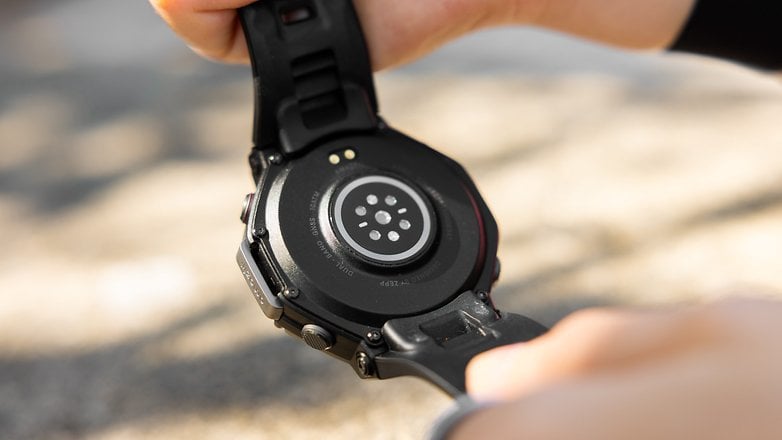
Amazfit is a brand known for its sports-focused smartwatches, and the T-Rex 3 is tailor-made for adventurers and outdoor enthusiasts. To benchmark its performance, I tested it alongside the Whoop 4.0 (review)—another device designed for athletes. Unsurprisingly, the T-Rex 3 delivered nearly identical results. While I didn’t use a chest strap this time, having consistently used the Whoop in previous reviews, which is highly accurate, I have no reason to doubt the T-Rex 3’s precision.
The health monitoring sensor on the back of the device tracks key vitals such as blood oxygen levels, sleep patterns, all-day heart rate, heart rate variability (HRV), resting heart rate, skin temperature, and respiratory rate. During my tests, it delivered reliable readings, performing on par with the Whoop 4.0.
Take a 10 km run, for instance. I compared heart rate data between the Amazfit T-Rex 3 and the Whoop 4.0. The T-Rex 3 recorded an average heart rate of 154 bpm with a peak of 176 bpm, while the Whoop registered 151 bpm and a maximum of 177 bpm.
To give you a sense of the GPS accuracy, during the same 10 km run through Barcelona’s narrow streets and mid-sized buildings, the T-Rex 3 had no issues accurately tracking my route. Even more impressive, it locked onto GPS within 3 to 8 seconds, which is remarkably fast for a device of its kind.
Like previous Amazfit devices, the automatic activity detection on the T-Rex 3 is highly reliable—a feature I really appreciate, especially since I sometimes forget to manually start a workout. It effortlessly tracks activities like walking, running, cycling, and swimming, ensuring that nothing slips through the cracks.
Now, I’d like to dive deeper into its performance when it comes to running and sleep metrics.
Outdoor Running
I’ve always felt that Amazfit excels in the running category, offering advanced analysis tools that genuinely enhance your training. The device provides in-depth insights into metrics like power, cadence, and stride, making it easy to interpret the graphs and identify areas for improvement—or when you absolutely need an isotonic boost during longer runs.
Their running algorithm also predicts how long it might take you to complete a half or full marathon based on your recent performance, which is a useful motivator. Since Amazfit partnered with OpenAI’s ChatGPT, the Zepp Coach has seen noticeable improvements, especially for running enthusiasts. Combined with the personalized running plans available in the Zepp companion app, it’s a solid upgrade for those serious about their training.
To top it off, Zepp introduced new running modes to the T-Rex 3, including Hyrox race mode and Ultramarathon support. This shows Amazfit’s commitment to delivering serious, detailed running analysis.
If you have a good Wi-Fi connection, it’s possible to effortlessly download maps and upload custom routes to the smartwatch, enabling seamless use of offline maps and detailed contour maps with turn-by-turn directions.
Sleep tracking
To be completely honest, I wouldn’t normally use the T-Rex 3 for sleep tracking—wearing a 48.5 mm device on your wrist overnight isn’t exactly comfortable. But for the sake of this review, I gave it a try. If you do decide to wear it while sleeping, the results are decent, closely matching those from the Amazfit Balance, which is the company’s best device to date for sleep metrics.
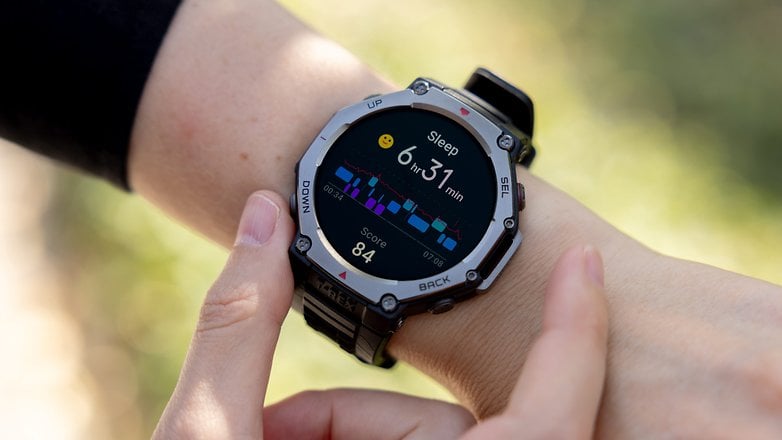
I believe sleep quality is one of the most critical metrics for anyone aiming for longevity and good health. In terms of sleep stage analysis, both the Zepp and the Whoop 4.0 tend to be more generous with their data. While I think Apple’s sleep-tracking algorithm leads the pack, the Whoop comes in a close second. Given the T-Rex 3’s similar performance in my tests, I’d rank it right up there with the Whoop in terms of accuracy.
As for data granularity, the Zepp companion app offers some advanced insights into sleep metrics. If you subscribe to the paid Aura feature, you can dive deeper into how your deep and REM sleep impact overall health, get weekly sleep consistency reports, and compare your stats with a global user base—helpful for seeing where you stand on a larger scale.
Battery Life & Charging
The T-Rex 3 packs a robust 700 mAh battery, and thanks to Zepp’s seamless integration of hardware and software, it delivers an impressive battery life lasting up to eight days in real-world conditions. However, Amazfit’s official specs are even more ambitious, claiming the smartwatch can last up to 27 days with typical use and around 13 days under heavy usage
.
Pros:
- Week-long battery life.
- USB-C charger adapter, no attached cable.
Cons:
As mentioned in the software section, I’m using the device in a closed beta test, so its performance may not fully reflect how it operates with the standard Zepp app companion. I believe the battery life could extend even further outside this test setup.
That said, when compared to other devices in its price range—and even some pricier models—the Amazfit T-Rex 3’s battery life stands out. I’ve been wearing the smartwatch for nine days now and only needed to charge it once, on day eight. This was with all sensors active, and I only enabled Energy Saver Mode when the battery dropped to 7%.
When it comes to recharging, the T-Rex 3 takes about 100 minutes to reach full charge—quite reasonable for a 700 mAh battery. By comparison, the Samsung Galaxy Watch Ultra (review), with its 590 mAh battery, took me 112 minutes for a full charge. In just 30 minutes, the T-Rex 3 reaches a 35% charge, giving you enough juice to keep going for quite a while, and by 60 minutes, you’re already at 70%.

The package includes a quick charger adapter that connects magnetically using pogo pins. This system is reliable, ensuring proper charging when connected correctly. What stands out is that, unlike the Amazfit Balance, the T-Rex 3’s charger adapter features a USB-C port without an attached cable, making it easy to plug into a MacBook or iPhone charger for added convenience.
Technical Specifications
| Amazfit T-Rex 3 | |
|---|---|
| Display |
|
| Health Monitoring |
|
| GPS |
|
| Memory | |
| Battery (According to manufacturer) |
|
| Connectivity | |
| IP/WR rating | |
| Materials | |
| Dimensions and weight |
|
| Colors |
|
| Compatibility |
|
Final verdict
Here’s how I see Amazfit devices like the T-Rex 3: when it comes to data granularity and advanced analysis, Amazfit sits above brands like Apple, Google, OnePlus, and Samsung—but still falls short of Garmin’s expertise. Zepp, Amazfit’s platform, excels with its health and fitness R&D, and the company offers impressive hardware at a highly competitive price.
The T-Rex 3 brings several features that many will appreciate: four physical buttons, a bright and colorful AMOLED display, dual-band GPS, efficient auto-activity detection, and a week-long battery life even with heavy use. Plus, it’s compatible with both Android and iOS, making it versatile across platforms.
However, there are some drawbacks. Despite an improvement in build quality, the device is still primarily plastic and only comes in one size. Many of its in-depth reports require subscriptions, and it doesn’t offer a proper music streaming option. While there’s a wide range of apps, there’s some overlap between services, which can feel redundant.
That said, the T-Rex 3 is available for $299, offering an exceptional price-to-performance ratio.
In conclusion, the T-Rex 3 stands out for its rugged design. If you’re into outdoor sports, value long battery life, prefer physical buttons over touchscreens, and want to improve your training without being bogged down by extra apps, this is a fantastic option.
For those worried about missing out on metrics like the Readiness score because they don’t want to sleep with a bulky smartwatch, Amazfit also offers the Amazfit Helio Ring. While it would be a great companion for health tracking, it’s currently only available in sizes 10 and 12.
Now, I’d love to hear your thoughts on the T-Rex 3. Is it something you would consider buying or recommending? Let me know your opinion in the comments below!

